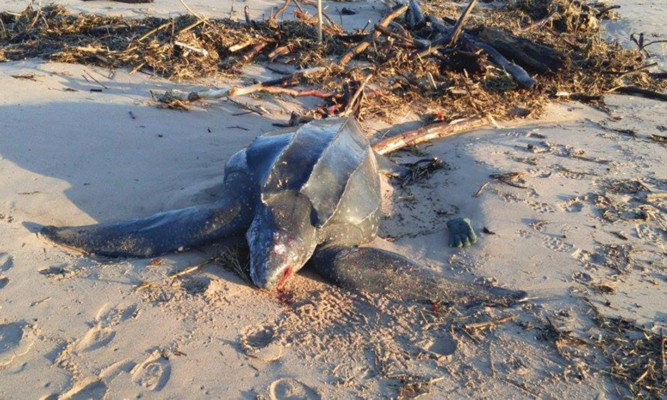Nature lovers in Angus are dismayed with the discovery of a carcass from a critically endangered species.
A leatherback turtle, which is the largest of all living sea turtles, was discovered on the beach at St Cyrus National Nature Reserve on Friday morning.
A team of recovery specialists from the Scotland’s Rural College marine animal stranding scheme will join locals willing to help move the 1.5-metre animal on the beach this afternoon.
Reserve manager Therese Alampo said she was “very sad” to learn of the discovery.
It is understood the stranding was caused by the aftermath of Storm Frank, which has seen a variety of animals end up on the north-east coast out of season.
Leatherback turtles are named for their shell, which is leather-like rather than hard, like other turtles.
They are one of the most migratory sea turtle species, crossing both the Atlantic and Pacific Oceans. Pacific leatherbacks migrate from nesting beaches in the Coral Triangle all the way to the California coast to feed on the abundant jellyfish every summer and autumn.
Although their distribution is wide, numbers of leatherback turtles have seriously declined during the last century as a result of intense egg collection and fisheries bycatch.
Globally, leatherback status according to IUCN is listed as vulnerable, but many subpopulations (such as in the Pacific and Southwest Atlantic) are critically endangered.
